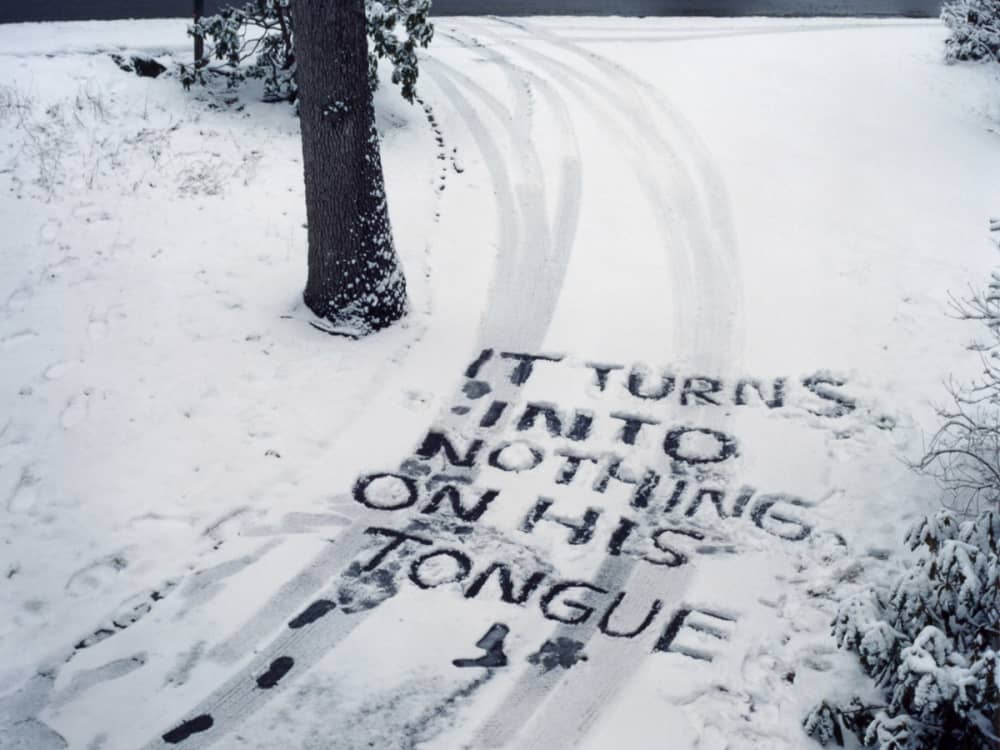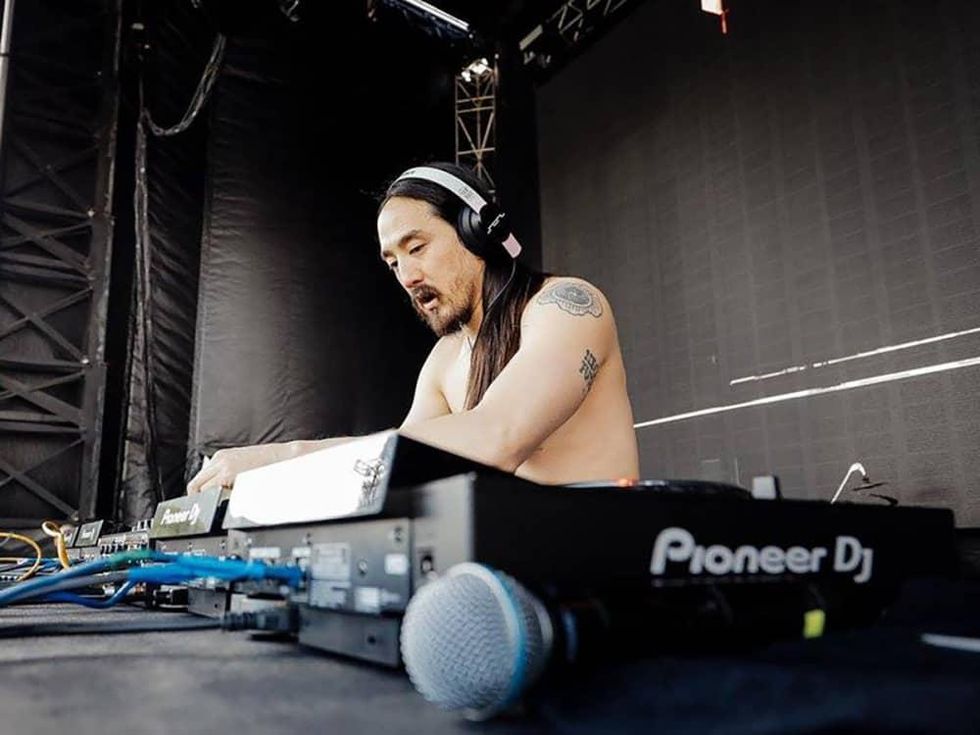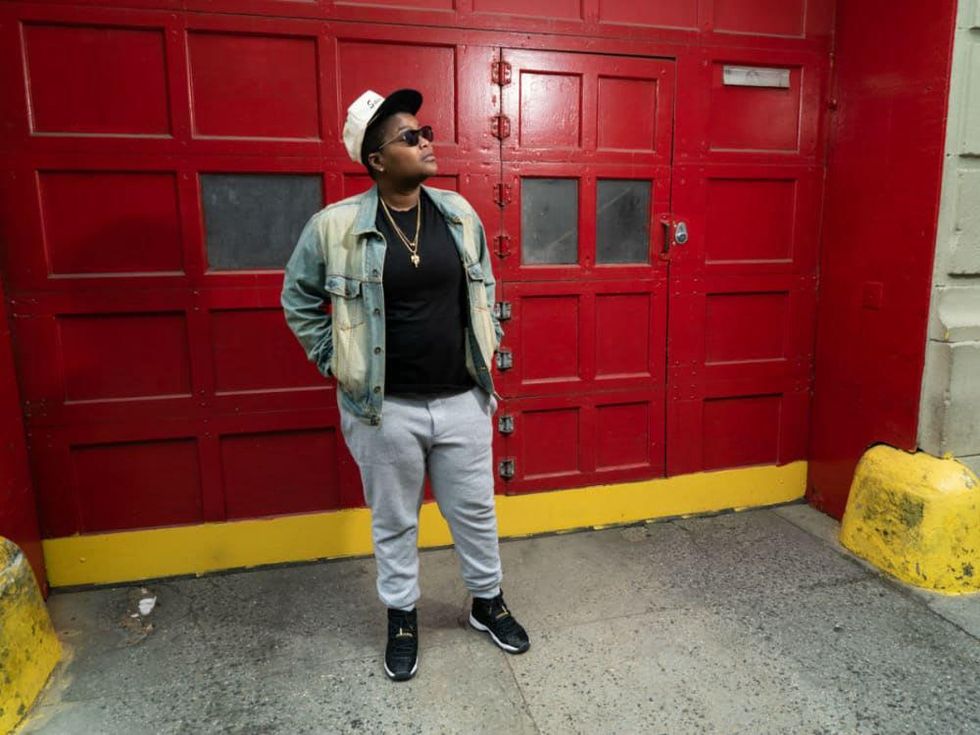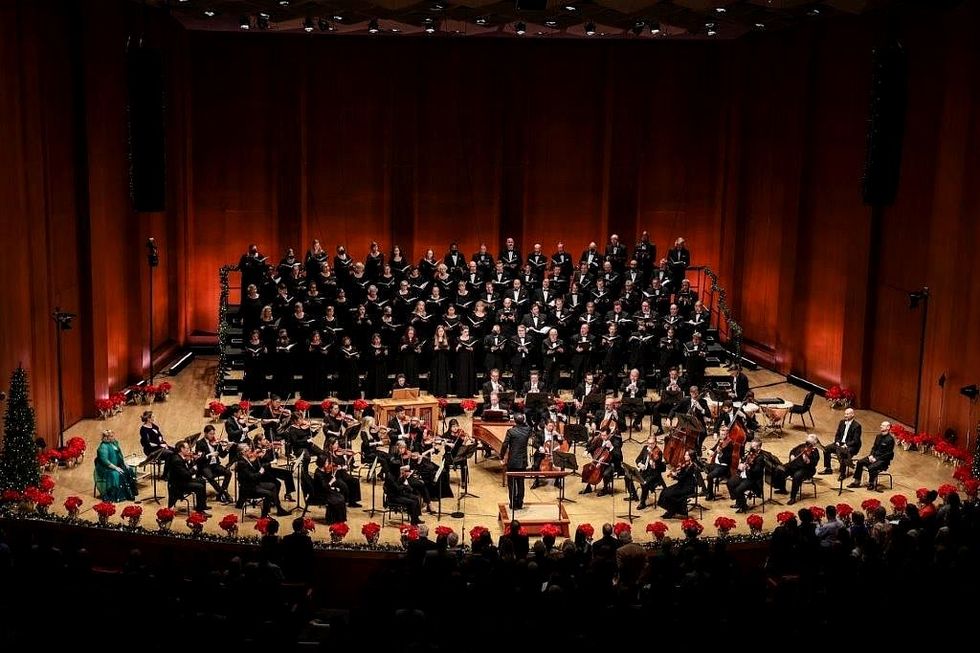Exhibits galore from Friday through April 25
FotoFest brings the world of photography to Houston

 Todd Hido, #8614 from the series "A Road Divided," 2009, from the FotoFest 2010Biennial exhibition "Whatever was Splendid: New American Photographs"
Todd Hido, #8614 from the series "A Road Divided," 2009, from the FotoFest 2010Biennial exhibition "Whatever was Splendid: New American Photographs" Fotofest banner from a previous biennial exhibition
Fotofest banner from a previous biennial exhibition Augusta Wood, "It Turns into Nothing on His Tongue," detail, 2005, from theFotoFest 2010 Biennial exhibition "Assembly: Eight Emerging Artists fromSouthern California"
Augusta Wood, "It Turns into Nothing on His Tongue," detail, 2005, from theFotoFest 2010 Biennial exhibition "Assembly: Eight Emerging Artists fromSouthern California"
In the art world, Venice has its legendary Biennale, New York has the Whitney Biennial, and Houston has FotoFest. Every two years the Bayou City showcases the state of the art of photography.
For the first time, the festival will focus on contemporary U.S. photography through a dizzying array of exhibitions, films, receptions, curatorial dialogues, workshops, and portfolio reviews. With countless local arts organizations chiming in for maximum exposure, Fotofest promises to keep Houston picture perfect this spring.
Founded in 1986, Fotofest has presented 13 installments of the only photography biennial in the world. The calendar of events stretches from Friday through April 25 and encompasses several venues. Five main exhibits comprise the core of the biennial, but a host of satellite events will keep Houstonians dining out on images on a weekly basis.
Four of the main exhibits are organized by distinguished curators from a variety of national collections. The fifth exhibit, and perhaps most unique to FotoFest, “Discoveries of the Meeting Place,” displays the work of 10 artists culled from submissions to the previous biennial's portfolio review — the largest such review in the world.
Registrants show their work and receive feedback from an international assembly of editors, curators, gallery owners and publishers. If you’ve been longing for your 15 minutes of fame make time for the Meeting Place: According to the Web site, slots are still available.
But you don’t have to be a starving artist to take part in FotoFest. Any Houstonian can navigate this vast sea of pictures without drowning in pixels or processing chemicals.
Why not start with a party? FotoFest opens with a bang Friday at its near-downtown headquarters with an opening event highlighting one of the central shows, “Whatever was Splendid: New American Photographs,” curated by Aaron Schuman. Schuman’s show traces the legacy of that genius of the everyday, Walker Evans.
“The striking similarities between Evans’s time and our own have become all too clear,” Schuman says. “Bearing this in mind, I began to investigate his profound influence on how the United States is still responded to, regarded, recognized and represented within photography today.”
You can start the revelries earlier that night with a reception for the opening of photographer Allison Hunter’s video installation “Zoosphere” at DiverseWorks. Hunter has spent years photographically documenting animals in zoos and abstracting these images to produce haunting meditations on the place of the animal in contemporary life. “Zoosphere” promises an arresting journey through a maze of galleries filled with life-sized projections of animals trumpeting, crying, and calling, all the while devoid of sound.
FotoFest manages to include something for nearly everyone — casual observers, budding photographers, and even children. After the conclusion of the festival, FotoFence takes off from May 9-19. FotoFence is an outgrowth of the Literacy through Photography project, which trains HISD teachers to bring photography and writing into the classroom. See the results of these efforts at the Fotofest headquarters as elementary, middle, and high school students exhibit their work.
And if the idea of seeing the world through the eyes of children appeals, take in the annual “Eye on Third Ward” photo show at the Museum of Fine Arts, Houston through May 23. Now in its 15th year, the show features photographs taken by students at Jack Yates High School as they document and map this historic district in their day-to-day travels.
In conjunction with FotoFest, the MFAH has mounted a massive survey of its renowned photography collection. For Ruptures and Continuities, which runs through May 9, assistant curator Yasufumi Nakamori chose from the nearly 20,000 works that photography curator Anne Tucker has spent years assembling. It's a fascinating and gorgeously laid-out exhibit. This retrospective of post-1960s photography provides a perfect context for the revelations of FotoFest. It includes Houston’s own Mark Bagge’s Polaroid documentation of media coverage flickering across television screens as U.S. soldiers descended upon Iraq.
While at the museum, don't forget to check out Andy Warhol, Cindy Sherman and other artists who taught us how simultaneously real and unreal photographic images can be. These luminaries inspired what looks to be one of the most intriguing of FotoFest’s offerings: MediaNation. Curated by Gilbert Vicario of the Des Moines Art Center, you’ll find photography transfigured by Twitter, YouTube, Xtube, MySpace, and the intimations of a digital of seeing ourselves and each other in an utterly new way.





